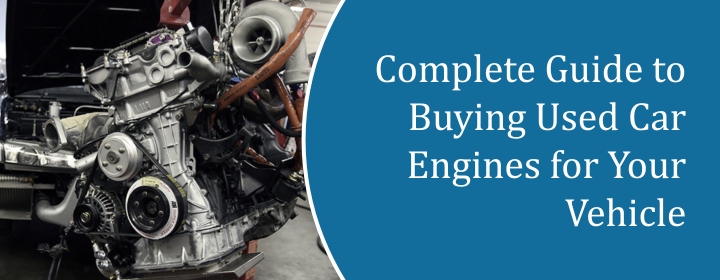
Complete Guide to Buying Used Car Engines for Your Vehicle
Planning to buy a used car engine for your car instead of a new one and save some of your money? This is the right place for guidance. Our guidance to find used engines for sale will help you to play a safe side from the scammers online. There is a guide of inspection tips for the used car engine & purchasing guide from the most trusted supplier “carenginepart.com”.
How to Inspect a Chosen Used Car Engine?
- Look Before You Touch: Open the hood. Check for leaks, oil stains, weird colors in the fluids. Rust? Bad. Corrosion? Bad. Clean engine doesn’t always mean healthy, but a greasy, crusty one? Red flag.
- Smell It: Yeah, smell it. Weird chemical smells, burnt oil, or coolant smells mean something’s off. Normal engines have that oily-metal smell. Anything sharp or sweet can be trouble.
- Check the Oil: Pull the dipstick. Oil should be amber-ish, smooth, not gritty. Milky or foamy? Could be water in the oil — head gasket issues. Low oil? Could be neglect or leaks.
- Inspect Belts and Hoses: Rub your fingers over belts. Cracks, frays, or slack? That’s extra work or imminent failure. Hoses shouldn’t be soft or brittle.
- Look at the Battery and Terminals: Corrosion on terminals? Clean it or ask the seller to. Check battery date if you can. Old batteries die fast.
- Listen While Cold: Start the engine cold. Weird ticking, knocking, or hissing? That’s warning signs. Engine should idle smooth. Fluctuating RPMs or backfires? Pass for now or dig deeper.
- Listen While Warm: After a 5-10 min drive, engine should settle in. Any noise developing here can hint at timing issues or worn parts.
- Check for Smoke: Blue smoke = burning oil. White smoke = coolant leak. Black smoke = fuel problems. None of these are small fixes.
- Test Fluids Beyond Oil: Coolant level, brake fluid, transmission fluid. If it’s low or dirty, seller might be hiding maintenance issues.
- Ask for Service Records: No records? Fine, just know you’re gambling a bit. Consistent maintenance history is gold.
How to Make Sure the Purchase with Carenginepart.com?
Before you even click around, have your car details ready. Make, model, year, engine type – all of it. The more specific, the better. You don’t want to order a V6 when your car runs on a 4-cylinder.
Search on Carenginepart.com
Head to their site. There’s a search bar, just punch in your car’s info. You’ll see a list of engines that match. Scroll through, check mileage, condition, and pricing. Don’t rush this – sometimes a slightly higher mile engine is still a steal.
Check the Details
Each listing has details like engine history, warranty, and return options. Read it. Don’t skip. Make sure it’s compatible with your car. Pictures are usually there too — they help you spot obvious damage or wear.
Add to Cart / Contact Seller
Found your engine? You can either add it to the cart, start the booking process or contact the seller directly for more questions. There just ask about testing, delivery time, and any hidden costs. Also, if you have more in your mind like Used engine and transmission both in same package, well you can get more off on the cost.
Book & Pay
Carenginepart.com has secure payment options. You just have to choose one you’re comfortable with. Double-check the total cost, including shipping. Once you pay, you’ll get a confirmation — that’s your proof that the engine is officially yours.
Track & Receive
After booking, you’ll get tracking info. The engine will be shipped right to your doorstep. Inspect it immediately when it arrives. Make sure everything matches the listing.
Install or Have It Installed
Unless you’re a mechanic, get a professional to install it. Saves headaches and keeps your car warranty intact (if applicable).
The Conclusion
Hope, you have made your mind to purchase the used car engine by just looking at the easy step by step purchasing guide from carenginepart.com.

